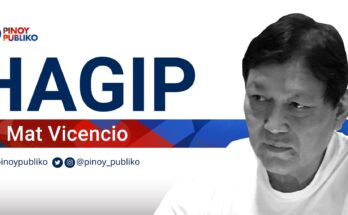IT was Pisay kabatch and kumpare, Perry Callanta who was recruiting me to Kabataang Barangay straight from the detention cell of the Youth Rehabilitation Center in Fort Bonifacio thru my first wife, Fe. After I was released from detention, I first worked for the family business of a fellow Pisay for a few weeks as a salesman. I did not make a single sale.
I finally joined the KB training group of Perry starting July 1977, just a few months after I was released from prison in January of the same year. For personal reasons, Perry left the KB when the Kabataang Barangay National Secretariat was just organized with offices inside the Philippine Navy Compound in Fort Bonifacio.
It was me who was asked to take his place with much apprehension in my mind because of my past political background and my boss was going to be a Marcos who at that time wielded her own power of influence. At first, I was assigned just to take over the KB School Chapters program and later the entire KB Educational Development Department. Can you imagine how awkward I was the first time Imee Marcos called for me to her office?
I can’t even recall until now what she asked me. The only thing I remember was my wide-eyed surprise when she slapped my arm with a notebook after she noticed I was looking down while she was speaking. Following that encounter was about half a decade of being one of the department heads of the KBNS, as Program Manager for Educational Development in charge of in-school activities like the KB School Chapters, Pangulo Scholarship and Study-Now-Pay-Later programs. It was an unforgettable working experience under a demanding but exciting Imee Marcos until February 1986.
Read Part 1 here: https://pinoypubliko.com/commentary/on-the-way-to-meeting-imee-marcos/
In the EDSA uprising in February 1986, together with a few student leaders who attended leadership training that my KB office conducted, I found myself within Camp Crame right inside its intelligence production unit where military radios were monitoring troop movements. I was still there when it was announced that the Marcos family left Malacañang onboard American choppers.
One of the police officers involved in my arrest in 1976 who belongs to PMA Class 71, Victor Batac, was then the chief of that intelligence unit. He was one of the leading personalities in the Reform the Armed Forces Movement or RAM that triggered the 1986 EDSA uprising. In 2008 he became my ninong in my second marriage. In Ninoy Aquino’s book, Testament from a Prison Cell, I was mentioned twice. The first described my arrest and detention. The second quoted another detainee saying he saw me being tortured. Vic was also mentioned in that book among the police and military officers involved in our arrest. When Vic was himself arrested for being involved in the attempted coups against the Cory government it was my turn to visit him at Stockade 4 in Camp Crame. That was how the wheel of fortune turned for us.
I was one of those whom Imee Marcos met just after she returned to the country from exile. She already knew while she was still out of the country about my presence in Crame during the EDSA revolt. When we met finally in a small gathering of KBs in a condo unit owned by KB Ram Antonio, she called me “Ramos boy.” It was in jest I thought so, but whatever that meant did not matter anyway. After this meeting, I cannot forget the time we accompanied her to their residence in San Juan. The house was stripped bare of everything including floor tiles. Similarly, in the immediate aftermath of the 1986 EDSA revolt, her KB office in Fort Bonifacio was raided and ransacked and so was her house in Wack-wack. When I went to her KB office after the incidents, I found it in complete disarray with her personal photos and papers strewn all over the floor some of which I could save.
We called her Boss then with codename 141. Like others from KB, I fondly call her Bosya now. There were a few times in the past when she introduced me to people by saying, “Rebelde yan!” The mitigating addition was, ”Matagal na kaming magkakasama sa KB.”
The stories between these timeline events were many and sometimes appeared incongruent. They formed a unique personal experience that kept challenging my objective capacity to dig into social values and gain whatever positive learning and teachings that I can use in my lectures and in my own life. It is from this that I extract answers to actual and implied questions, and even doubts, that I encountered while discussing these values and their consequent ideas. What I always find a big help is precisely my life experience which can be described as how values really built the idealism in my youth and how they formed my strong drive for social reconciliation in my latter years. I was able to forgive my former “torturers” and some of them became my trusted friends in my older years.
My gut feeling that builds up from my more than half a century of God-given journey is the best thing that I have to help me digest and appreciate better what I read, what I hear, and what I see in order to share them with others with confidence.





